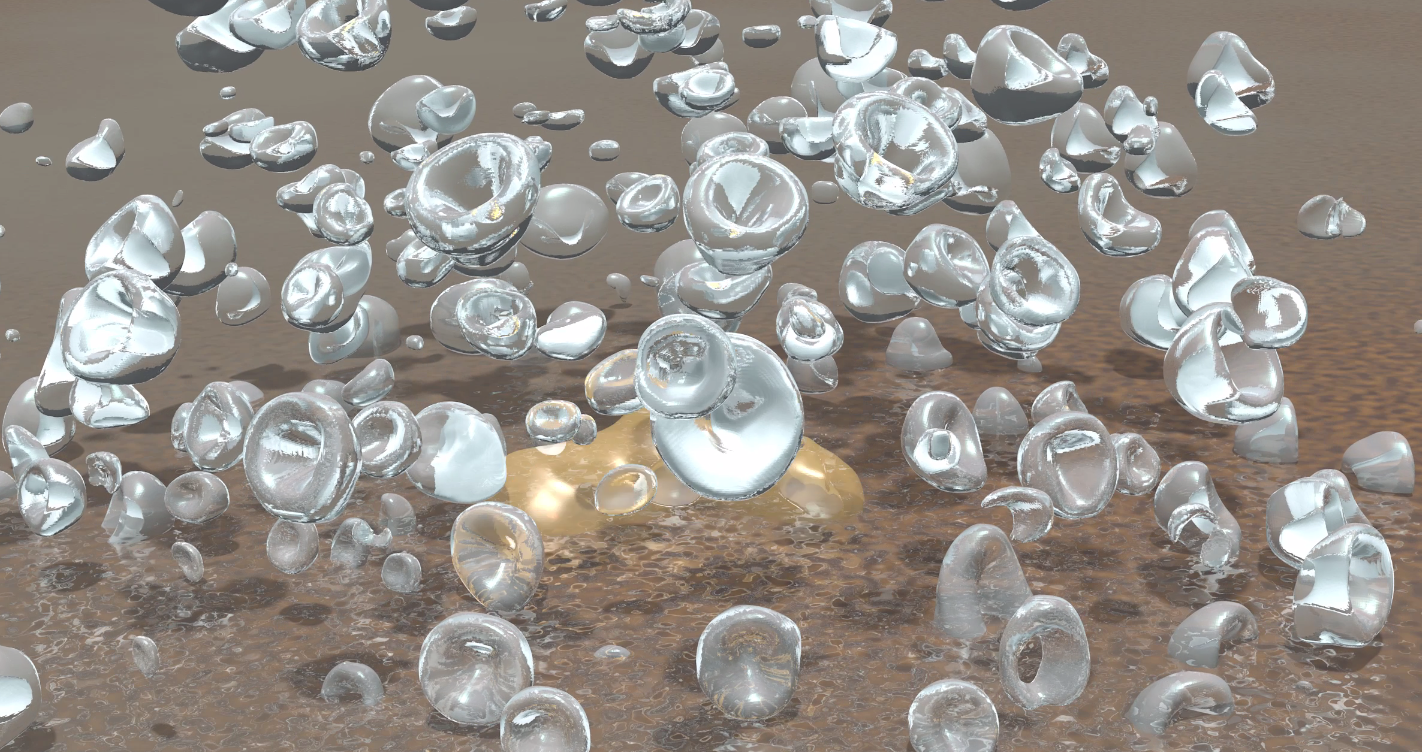As boat propellers rotate underwater and fuel injectors pump fuel, tiny bubbles cluster around their moving parts. The bubble clouds flow away and rapidly collapse, creating regions of powerful pressure in a burst – a process called cloud cavitation collapse.
Such pressures can wreak havoc on propellers and injectors, but they also can be used productively, says Petros Koumoutsakos of ETH, a science and technology university in Zurich, Switzerland. Such collapsing bubbles already are routinely used in medicine and show promise for energy production.
Researchers have few options for examining this process, but Koumoutsakos, a computational scientist on sabbatical at Harvard University and the Massachusetts Institute of Technology, seeks a new route: using large-scale simulations. Other researchers have studied the collapse of just a single bubble in detail and simulated groups of up to 120 bubbles at low resolution.
For the first time, Koumoutsakos and his students have simulated a collapsing cloud of tens of thousands of bubbles, thanks to an INCITE allocation of 72 million processor hours on Mira, an IBM Blue Gene/Q supercomputer at the Argonne Leadership Computing Facility, a Department of Energy Office of Science user facility.
Dentists routinely use cloud cavitation collapse to clean teeth. As the bubbles rapidly burst on the tooth surface, they dislodge and destroy dental debris. The same principle could be used to deliver cancer drugs to tumors. Bubbles could be delivered, with the cancer drugs, to leaky blood vessels in an area near a tumor. Ultrasonic pulses would interfere with the bubbles and the localized high pressures from the bubbles’ collapse could help medicines infiltrate tumors by destroying the surrounding tissue in precise locations. Some researchers also have suggested that the high pressures generated in cloud cavitation collapse could generate energy through nuclear fusion, the same process that powers the sun, if the bubbles could be assembled and collapsed in controlled ways, Koumoutsakos says.
To minimize equipment damage and harness these pressures, researchers must understand how cloud cavitation collapse works. So far, however, scientists have had few good options for studying the detailed fluid dynamics involved. Collapse occurs within a thousandth of a second – quicker than most cameras can capture. In addition, the extreme pressures generated could damage high-speed cameras and other instruments, the very devices needed to measure them. Therefore computational simulations provide an essential tool for probing these forces.
Previous simulations have provided only limited insights. For example, studies of single-bubble dynamics have revealed little about the behavior of a typical cloud of tens of thousands of strongly interacting bubbles. Koumoutsakos and his students have developed a computational approach that takes advantage of high-performance computing (HPC), allowing them to simulate the collapse of up to 70,000 bubbles in water.
‘If you go and have a look at these clouds of bubbles, you realize that it’s nothing like a sphere.’
It hasn’t been easy, as computational challenges abound. The team needed to capture interactions among multiple bubbles as they deform, including pressure waves, shocks and various fluid flows. The researchers developed open-source software, CUBISM-MPCF, based on the finite volume method used to study a range of real-world problems from pollutant transport to blood flow. CUBISM-MPCF is the most proficient computational fluid dynamics code in the world today in time to solution, percentage of peak machine speed and parallel efficiency.
Koumoutsakos and his team have used the code to set international records for supercomputing implementation in fluid dynamics. In 2013, they demonstrated sustained performance of 14.4 petaflops (quadrillion scientific calculations per second) while modeling the collapse of a cloud with 10,000 bubbles, winning the Association for Computing Machinery’s Gordon Bell Prize, an international honor for HPC achievement.
When they used Mira to simulate the collapse of 70,000 bubbles, the team took snapshots of a system that contained 13 trillion points for several millionths of a second. That meant each simulation produced many petabytes of data requiring further analysis. Though they are still analyzing the data, the results are exciting, Koumoutsakos says, because they show the process of collapse differs greatly from what researchers had thought.
Scientists had envisioned spherical bubbles collapsing symmetrically in a cloud. “But if you go and have a look at these clouds of bubbles, you realize that it’s nothing like a sphere,” Koumoutsakos says of the team’s new simulations. Instead, at the cloud’s edges , bubbles compress to oblong, lens-like structures, while at the its central part they become spherical. The collapse produces a series of interacting microjets that induce pressures toward the cloud center that are up to a thousand times greater than the surrounding ambient pressure.
Simulating the collapse of so many bubbles and acquiring the data was a moonshot of sorts, Koumoutsakos says. Now the team is processing results, creating databases and producing visualizations. “We now know the geometry of how clouds collapse. We understand the physics, and we can propose more advanced models for engineers.”
Because experimental data is limited, the researchers validate their computer simulations with existing theory and use uncertainty quantification to ensure their results are consistent even as they change the parameters affecting the simulations. They are also working with mechanical engineers such as Tim Colonius at Caltech and Themis Sapsis at MIT to ensure their simulations incorporate existing theories and to develop new engineering models of these processes. The team also collaborates with Nikolaus Adams at the Technical University in Munich, Germany, whose group studies engineering applications for cavitation and its potential to erode marine structures.
Once Koumoutsakos and his team have further understood the governing mechanisms for the cavitation collapse phenomena they’ve observed, they would like to create designer bubble clouds. With a clear understanding of the physics of collapse, they could arrange bubbles of assorted sizes so they collapse and destroy metals or work toward fusion.
Designing such systems will require new algorithms that help the scientists automate the search for design parameters compatible with such large-scale computations. Such studies aren’t far away, Koumoutsakos stresses.
